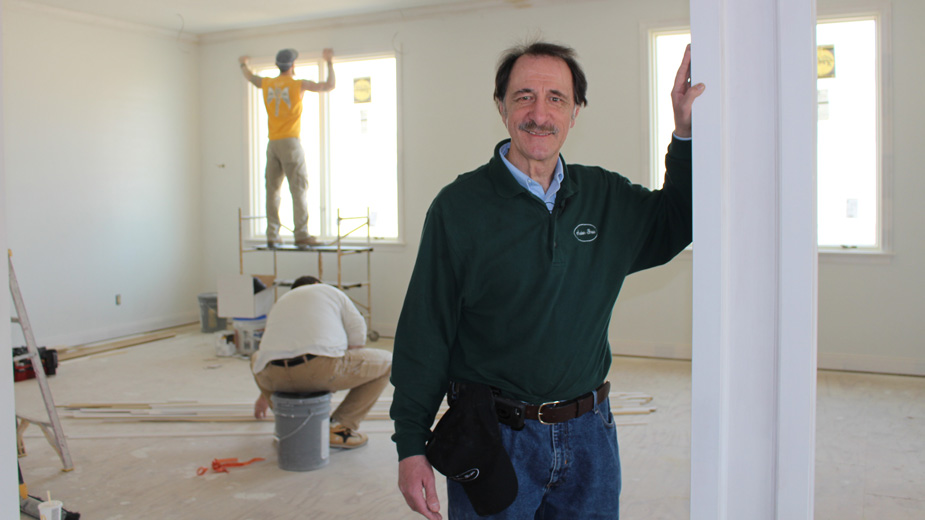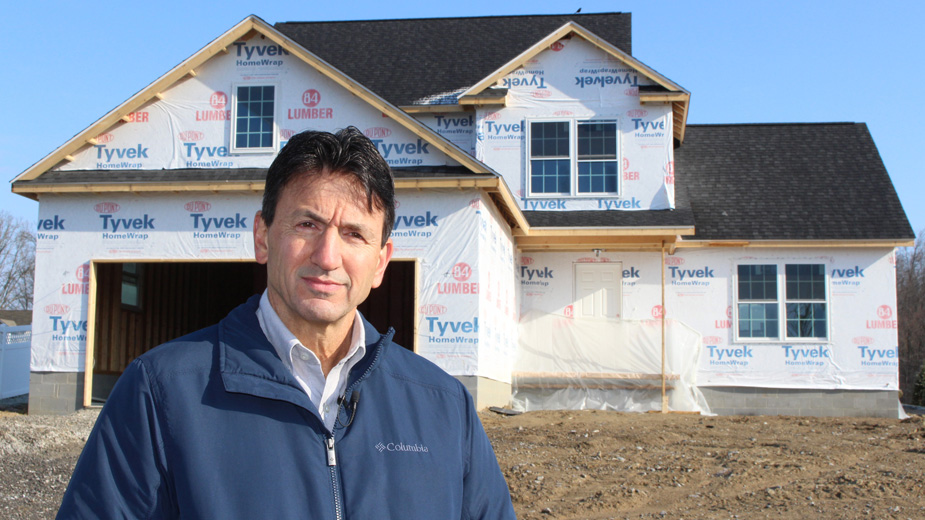Home Builders Nail Down Busy Season
YOUNGSTOWN, Ohio – It’s been a decade since the bottom dropped out of the housing market, driving many contractors from the house-building industry. But renewed consumer confidence is giving the builders who survived hope for a brighter – and more lucrative – future.
“In our Valley, we’re not where we were in 2007,” says Sam Pitzulo, owner of Sam Pitzulo Homes & Remodeling, Canfield. “But we are making a good comeback as far as building goes.”
Only about a third of the local builders remain from prerecession levels, according to Pitzulo. When the Great Recession hit, a generation of builders around the age of 40 to 55 “disappeared from our industry,” he says.
Nationally, there is a push to get younger people into the trade because “there’s good money in the industry.”
Since starting his business in 1990, Pitzulo is on track for his best year since 2007, he says. In 2017, the company enjoyed a 30% increase in business over 2016. Annually, Pitzulo builds 10 houses and does 30 to 40 remodels.
Ranches and first-floor master bedroom suites are the most popular designs, he says. Of the 14 houses Pitzulo has built in The Preserve development in Canfield, only one has an upstairs master suite.
“People want to stay in their home; grow in their home,” he says.
Also popular are open kitchens, open eating areas in lieu of formal dining rooms and bathrooms with walk-in showers instead of big tubs, Pitzulo notes.
Flex rooms are increasingly popular because they “give owners a chance to do what they please with the room.” Typically, flex rooms become playrooms for kids or an office, he says.
Anyone from young couples to retired baby boomers are building houses with first-floor master suites, says John Sudon, co-owner and residential architect of Sudon Bros. in Girard. Two-floor homes that have a first-floor master reserve the upstairs bedrooms and bathroom for the children.
Twenty years ago, Sudon would average two ranches for every 20 houses built annually, he says. Today, nearly a third of what the company builds is ranch style and another third contains first-floor master bedrooms.
The idea is to build houses that “people can live in basically forever,” he says.
“Mostly people say, ‘The only way I’m going out is if they carry me out,’ ” he says with a laugh. “I get a lot of that one.”
Vinyl-sided houses have been replaced by the so-called transitional style, which features more stone and brick on the facade. Another popular style is “arts and crafts,” signified by a front porch with columns and beams, he says.
Sudon Bros. has 10 projects in the pipeline and bids placed on others, he says.

Pictured: John Sudon’s company, Sudon Bros., is working on a house with a first-floor master suite in Canfield’s Westford Lifestyle Community.
Business is up 10% over this time last year, according to Sudon, who credits increased consumer confidence for his company posting its best winter sales period in a decade.
“There’s more money out there. People have a comfort level now, which they did not have before,” he says.
Typical houses – between 2,000 and 2,700 square feet – start at $250,000 to $300,000, he says. From the day the foundation is dug, a house is usually finished between four to six months.
With an aging baby boomer population, in-law suites are becoming more prevalent and are in about 7% of the houses Sudon builds, he estimates. Sudon builds 95% of its houes with three-foot-wide doorways, including closets and pantries, to accommodate walkers and wheelchairs.
Most buyers build in developments, with very few building on isolated lots, he adds. Sudon, who builds in the Westford development in Canfield, says houses in developments support the value of new builds.
“Buyers know what’s there so they know what the value of their house is going to be,” he says.
Sudon has a house under construction at Westford. “An isolated house doesn’t hold its value as much as something like this,” he says.
At Ciardi Co. in Boardman, building activity is up 30% over last year, says owner and president John Ciardi.
Ciardi’s company is focusing on Columbiana, which is “on the cusp of really having a growth spurt” with the addition of TownCenter at Firestone Farms, he says.
“They’re expanding that intersection right now,” Ciardi says. “Once that’s done, that would give them another shot in the arm to the [related] commercial development.”
With little housing inventory in Columbiana, Ciardi looks to be among the first to build in the second phase of the Cedar Run development, which should be ready this spring with 34 new lots.
Master Plan Builders Inc. of North Lima primarily builds in Columbiana’s Old Saybrook and The Back Bay at Arrowhead Lake as well as Avellino in North Lima. Houses can range from $300,000 up to millions, says the company’s marketing and design director, Adam Campesi.
Master Plan completed nine houses in 2017 and has 18 scheduled this year. “So we’re substantially up from last year,” Campesi says.
About 60% to 75% of Master Plan’s builds are between 2,000 to 4,000 square feet. Much of the prerecession work of the company focused on condominiums and multi-family builds, but single-family houses and free-standing condominiums are more popular today, he says.
A notable change is in home design, Campesi says.
In years past, customers would select their design then find a lot. Today, many customers buy the lot first, then master plan designs the house to the surroundings. So, if a lot is next to a lake, the company will design the house with panoramic views of the lake in mind, he says.
“The design phase is a bit longer because there are multiple meetings to arrange the house that the customer sees fit,” Campesi says. “You’re working with them from the start, so there’s less going back to the drawing board.”
Nevertheless, urban renewal is a burgeoning trend with renovation, says John Angelilli, chief financial officer of GreenHeart Companies in Boardman.
Already a popular trend in larger metropolitan areas, such as Pittsburgh and Cleveland, he says parts of downtown Youngstown and Warren are becoming popular places to renovate a home.
“You see a lot of young people moving into those,” Angelilli says, because they want to be close to the city and what’s happening downtown.
It’s part of the reason GreenHeart opened its windows division, which focuses on window restoration – a hotly demanded service among owners of historic homes. While restoration accounts for less than 5% of GreenHeart’s business, Angelilli expects it to increase.
“Travel throughout Pittsburgh, eastern Ohio and western Pennsylvania. There are tons of communities that were developed ain the last century – in the ’20s, ’30s, ’40s and ’50s,” Angelilli says.
“Those homes are difficult to duplicate the craftsmanship that was prominent in those decades.”
Restoration and remodeling work is up “three times what we did last year,” he says.
The company does restoration work locally as well as in Pittsburgh, Toledo, Columbus and Cleveland. It looks to hire four people for the restoration division.
For new houses, GreenHeart is building just north of 20 this year, making 2018 “the best year in recent memory,” Angelilli says.
“We’re digging a basement every other week for the next seven months.”
Pictured at top: Of the 14 houses Sam Pitzulo has built in The Preserve development in Canfield, only one has an upstairs master suite.
Copyright 2024 The Business Journal, Youngstown, Ohio.



